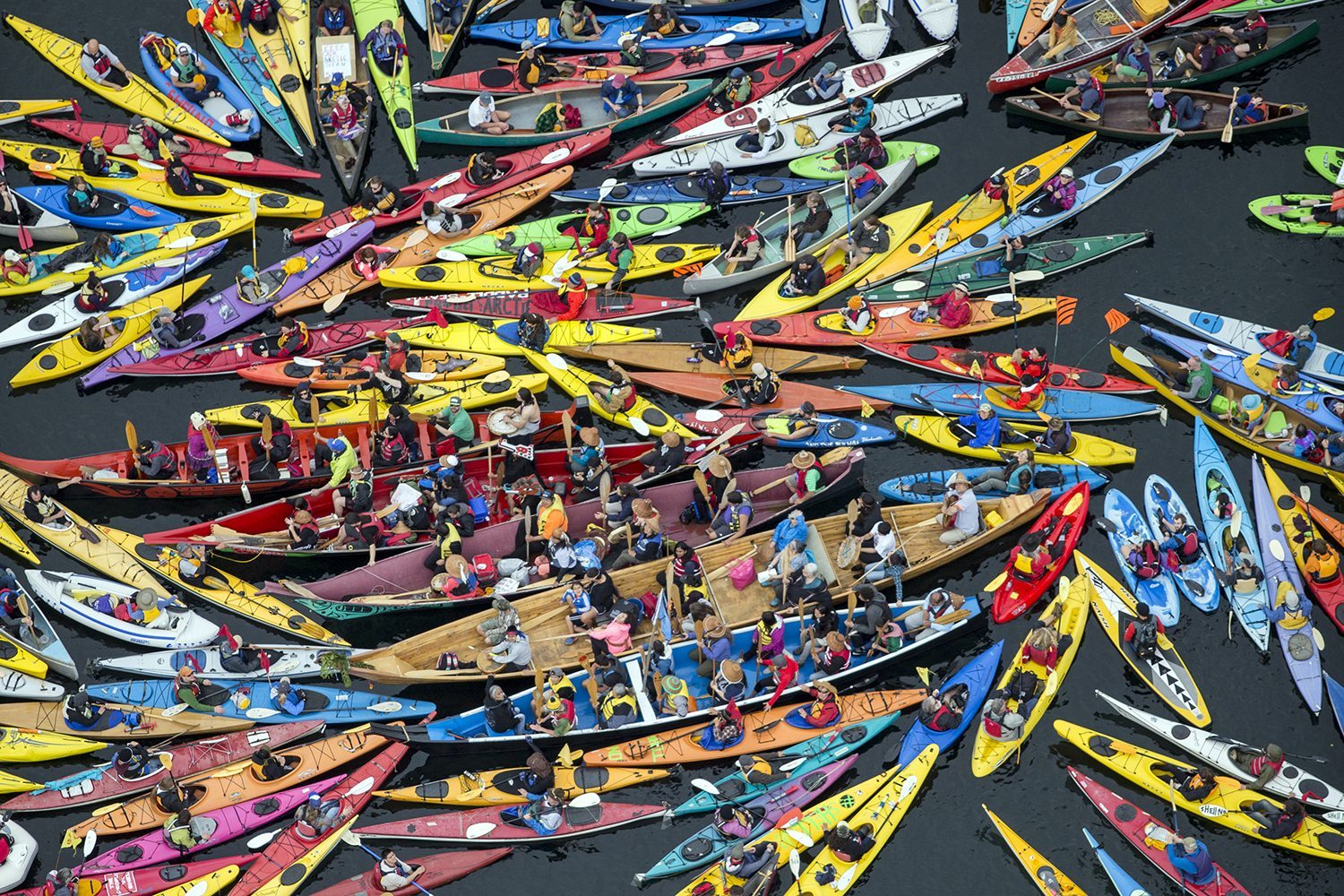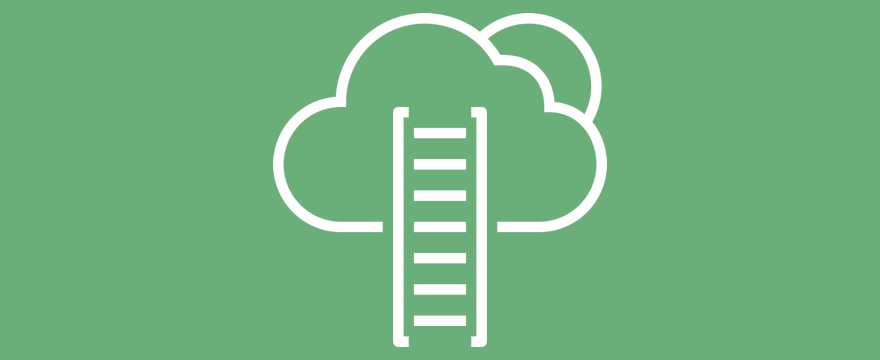Michael Silberman is Global Director of Greenpeace’s Mobilisation Lab, a network dedicated to envisioning, testing and rolling out innovation in people-powered campaigns around the world. Here’s an edited transcript of our recent conversation about network strength, organizational change and open source thinking in the battle for our planet.
Matt: Mozilla has been thinking a lot about the need to build a network, versus just a “community” of supporters. What’s the difference in your view, and why does it matter?
Michael: It’s such a fundamental question, and Greenpeace is going through a similar journey. At the end of the day, what do we want?
Do we want people to cheer us on from the sidelines? Or are we about building a movement and network of activists?
That’s something Greenpeace is evolving through, and something the Mob Lab has been helping with: guiding one of the world’s largest campaigning organisations through reorienting and rewiring itself for success in a digital, people-powered campaigning era.
What’s driving that evolution? Why now?
Change happens in response to crisis.
Significant changes don’t occur unless there’s some need to change. I think Greenpeace’s version of that was the post-Copenhagen climate talks in 2009.
It was a massive failure for the climate movement. All these different organizations employed all these innovative campaign tactics, but ended up coming home with their tails between their legs; we didn’t achieve anything remotely close to what we had hoped for.
 Even the largest petition in history — a 15-million-person joint petition with Avaaz, Greenpeace and all these groups — didn’t get the outcomes we wanted. Strategy aside, it was a profound moment of reflection.
Even the largest petition in history — a 15-million-person joint petition with Avaaz, Greenpeace and all these groups — didn’t get the outcomes we wanted. Strategy aside, it was a profound moment of reflection.
How did Greenpeace respond?
Greenpeace’s (then-new) international executive director, Kumi Naidoo, gave a “burning platform” talk to the organization’s leadership, about the profound risk of winning battles but losing the larger war.
Greenpeace has been incredibly successful at winning battles — but not at the scale of the challenges we’re facing.
We needed to re-think how we design cutting-edge campaigns. What does cutting-edge mean today, and how do we stay there? More explicitly: how do we put people at the center of our work?
The only way we can win at the scale of these challenges is not as Greenpeace alone, but by leveraging the full potential of what people can do. In short: building people power.
In response, Greenpeace invested in a series of strategic initiatives, including launching the Digital Mobilisation Lab. It’s a “center of excellence” around digital mobilization and engaging the potential of all these people. We later evolved it to just “Mobilisation Lab;” the digital aspect was important early on — but ultimately It’s about helping Greenpeace become as effective as it can be in a modern campaigning landscape.
That means that we, the organization, and also the entire world can campaign through the democratization of technology. Anyone with access to the internet, a smartphone, etc., should have the ability to raise awareness about an issue, connect with others, mobilize and organize with others, raise money — basically everything you need to put a campaign together.
How is that different from what Greenpeace has always done — or is it even different at all?
Greenpeace has always been good at bold actions that define issues and inspire others to act — but that hasn’t always involved mass numbers of people. Our role in the past was often as a front-runner or catalyst — not necessarily as a mentor or convener.
In the past, Greenpeace alone could often win on an issue. There’s often a “David versus Goliath” mentality where we’re able to create and catapult these “mind bombs,” do the media work, do the advocacy, do the action, do the whole thing by ourself.
But now we’re in a world where it takes an “Army of Davids.”

Greenpeace alone is not sufficient to make change in most cases. And today’s fragmented media landscape makes it harder for us to make the same splash as in the past; it’s a more participatory media landscape, which requires the active involvement of more people.
Our role, and some of the work you’ve seen from [former Mozilla staffer] Laura Hilliger around the “Seven Shifts” Greenpeace is making — is the idea of moving from the hero of every story into more of a mentor, an enabler.
“Open” and “open campaigns” are a recurring theme in the stories Mob Lab shares. Why is that?
I think there’s a lot we can learn from open source. What does it look like for people to co‑create? What models do people use to co‑create strategy? In part, it’s about many brains working on an issue instead of just a few — on everything from planning to execution.
Where are the points where opening pieces of our work give us better results, or help us scale up a campaign?
That doesn’t mean there’s no role for professional campaigners — it just means we need to think about how engaging people’s time, contribution or expertise can help our work. That’s the evolution we’re going through, picking that apart. And if you’ve already been working a certain way for decades, it becomes a whole mind shift.

It must feel a bit like sharing some of Greenpeace’s “secret sauce” or source code, so that others can benefit?
Exactly. One good example is our “Non-Violent Direct Action” working group. That’s one of Greenpeace’s core ingredients, and one of the organization’s super-powers — and we’re now actively opening up and sharing that power with others.
We’ve done that through “Action Camp,” constantly helping to train people in the movement. Greenpeace was a key part of training many of those people who participated in the daily arrests at the White House against the Keystone Pipeline, for example, around how to be part of an arrest-able action.

It’s open in terms of: you can come get trained. We can come talk, plan it together, and it becomes, in the right cases, even more powerful than just a few of us doing an action. It’s not right for every case, but in this case, it’s a mass action in which people are putting high stakes on the line. We’re asking: what does it look like to develop actions that many people can engage in that are high-risk? And not just tightly controlled things that we do alone.
How much of that is about build long-term relationships and power, versus short-term individual actions?
We’re increasingly realizing that organizing is as important as mobilizing.
When we’re thinking about engagement, it’s about both breadth and depth. We want lots of people involved, but then we also need people engaged in deep ways.
That’s where this question of organizing and investing in the long‑term power of people and communities comes up. It’s not something we’re historically amazing at. Greenpeace is often known for launching campaigns, winning, sometimes working with communities in that fight — but then moving on to the next thing. Hopefully that community has picked up some new skills along the way, but that doesn’t necessarily mean we’re building lasting power.
One of the shifts we’re now seeing is: Greenpeace thinking about the lasting strength of its network — hopefully calling people up to their highest potential, and keeping them engaged at that high level. If you build that network and relationships and trust over time — supporting people in the things they’re doing in their own community — it should come back to you. It will be invaluable when you’re working on that next global campaign, or the next big fight you’re in the middle of.

What are some examples of high-profile open campaigns?
In the US there was a much-celebrated action in Seattle and Portland, with activists in kayaks blocking one of Shell’s ships and rigs heading out to drill in the Arctic. Greenpeace worked in partnership with dozens of different organizations and civil society, people who were never part of any Greenpeace event previously.
It’s not something Greenpeace could have done alone, and wouldn’t have had the ongoing impact or movement-building had it been done in a more traditional way. 350.org Seattle and all these other community groups were ready to mobilize together, because it was organized in a more open collaborative way.
It can’t just be Greenpeace fighting all the battles for the planet. We’re not going to win on climate with any one organization alone.
Further reading
- Greenpeace’s “Mobilisation Cookbook“ (free PDF)
- Bring on the people: Opening up non-violent direct action (blog post)
- “How We Make Change is Changing“ (blog post)
- MobLab Dispatch — people powered campaigning, training and jobs (e-newsletter)
Books


[…] How does a long-established, staff-driven global advocacy organisation open up campaigns and scale meaningful action by millions? Mozilla’s Matt Thompson spoke with MobLab for a wide-ranging conversation about helping staff around the world envision and build powerful people-led work. Read more in Open Campaigns at Greenpeace: Building network power and “an Army of Davids” to tackle n…. […]